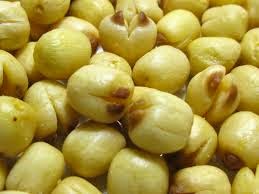Lotus
Flower – Medicinal value


The petals of the lotus have a common
use in cooking dishes and in the preparation of perfumes. A tea prepared from
the roots of the lotus strengthens the body and is a relief for excessive
thirst. It is also capable of reducing inflammation and cleansing wounds. Tea
made from lotus leaves is another provider of relief that includes colds,
headaches, coughs, nose bleeds and diarrhoea.
This source of tea has the
ability to remove toxins from the blood stream, thereby strengthening the
immune system. If the lotus leaves are new, then they are a source of various
nutrients to the human body. Leaves can also be used in the lowering blood
lipids and in the treatment of fatty liver. Lotus is helpful in controlling the
burning sensation, due to its cold potency.
The plant helps in improving the
skin texture and complexion. It improves mental condition and regularizes the
peristaltic movements. It treats urine related problems and maintains the
body’s normal temperature. The leaf paste is applied to the body in case of
fever and inflammatory skin conditions. The young leaves of lotus are taken
with sugar to treat rectal prolapse.
The leaves are also used in treating
sunstroke, diarrhea, dysentery, dizziness and vomiting of blood. The stamens
are mixed with jaggery and ghee to treat hemorrhoids. The leaves and flowers
are useful in many bleeding disorders. Lotus flowers are prescribed to promote
conception. The flower stalk, mixed with other herbs, is used to treat bleeding
from the uterus. The petals alleviate thirst and inflammations while the seeds
are powdered and mixed with honey to treat cough. Lotus, when taken with ghee,
milk and gold, is considered a general tonic to promote strength, virility and
intellect. Its flowers, seeds, young leaves and roots (rhizomes) are widely
used in cuisines across the globe.
Lotus petals are used for garnishing and the
leaves are used for wrapping food. The distinctive lotus seed heads that
resemble the spouts of watering cans are sold throughout the world for
decorative purposes and dried flower arranging. Lotus rootlets are used in
pickles, along with rice vinegar, sugar, chili and/ or garlic. The stamens are
dried and made into a fragrant herbal tea. In Asia, lotus is popular with
salads, prawns, sesame oil and coriander leaves.
Spiritual
Significance - The lotus flower, notes writer Share Siwek on the website
of the Flower Essence Society, is symbolic in Hinduism and ayurvedic medicine,
representing eternity, purity and divinity. In both Hindu and Buddhist
mythology, many deities religions are depicted sitting on a lotus blossom or
carrying a lotus. The lotus flower also is used to symbolize beauty, sensuality
and sexuality; in the famed Indian love-making guide "The Kama
Sutra," the most skilled woman at the art of love-making is called
Padmini, which means "the lotus woman."






.jpg)


Nice post. Well what can I say is that these is an interesting and very informative topic on help with digestion problems
ReplyDelete